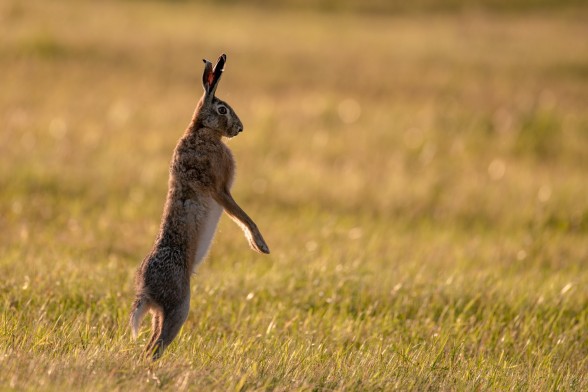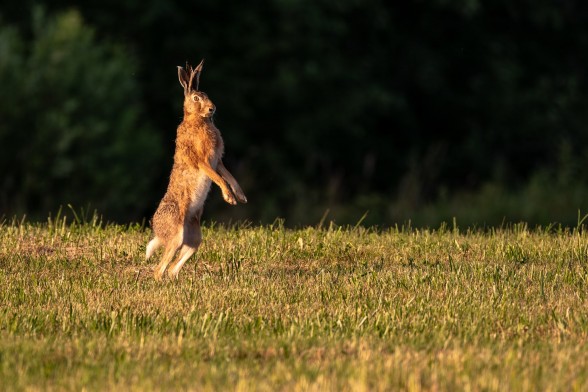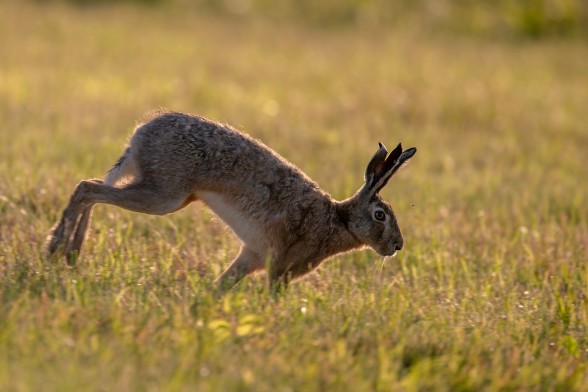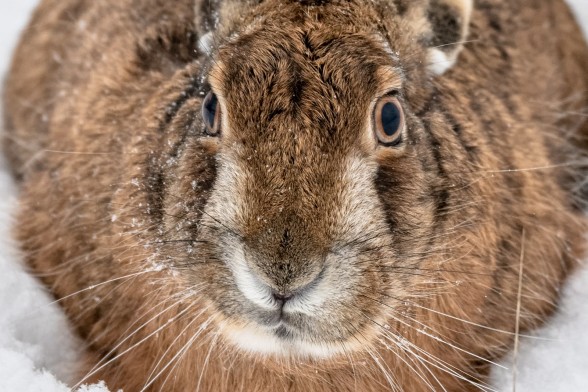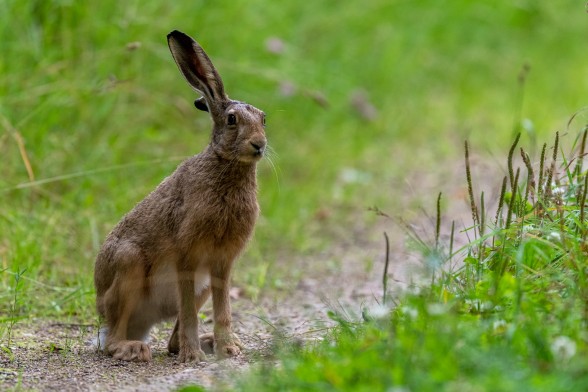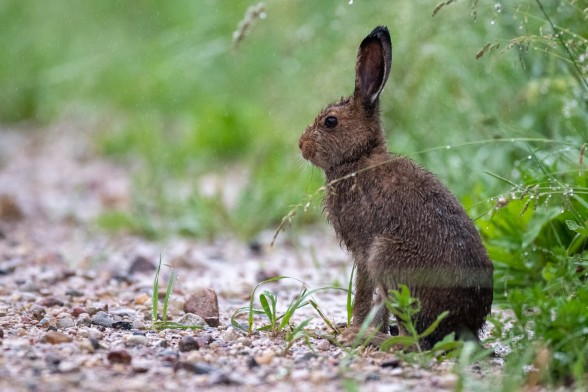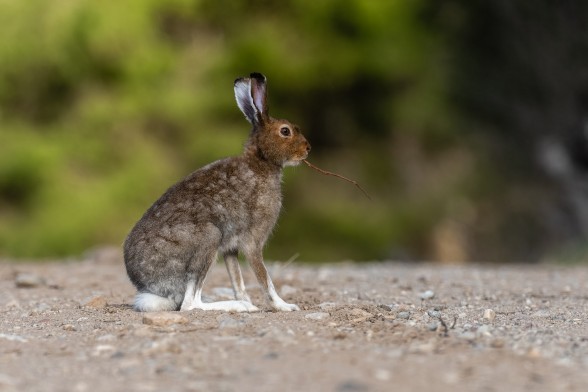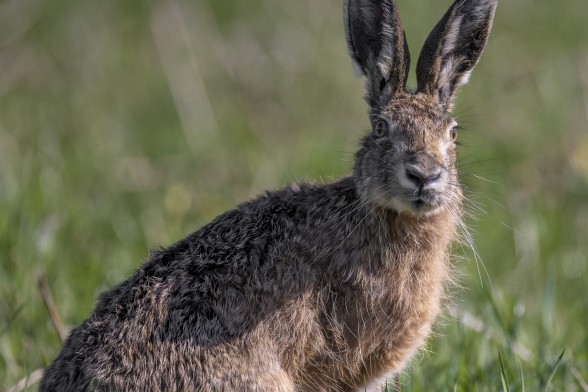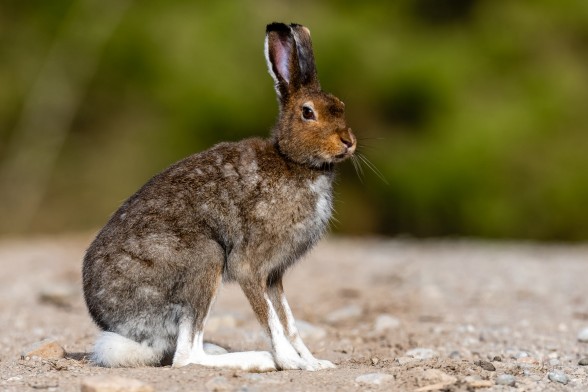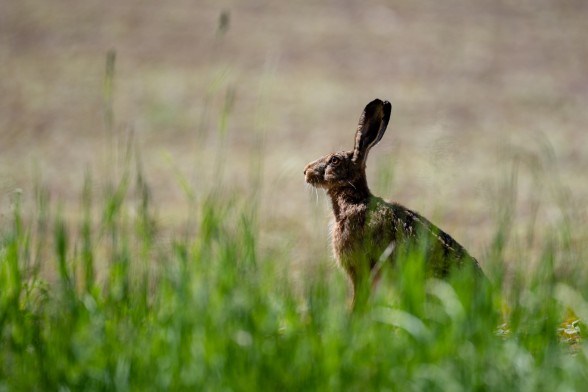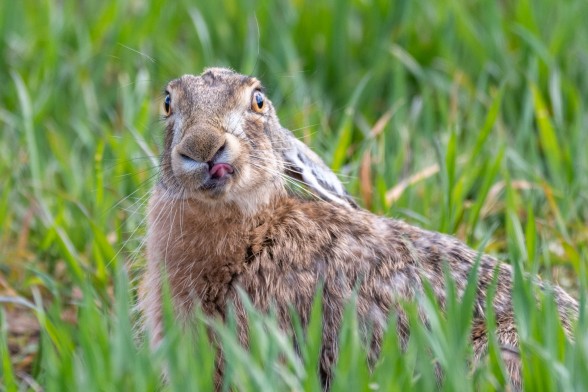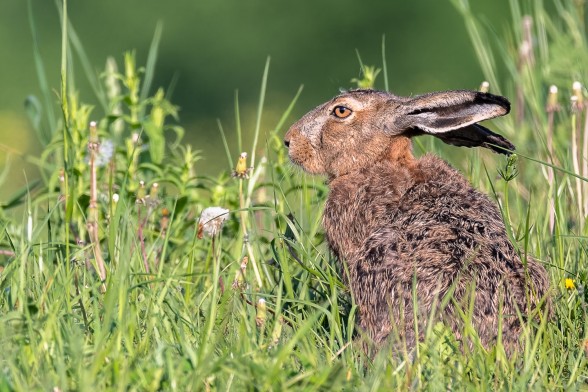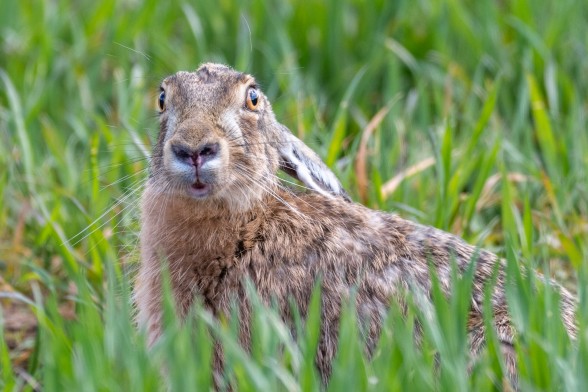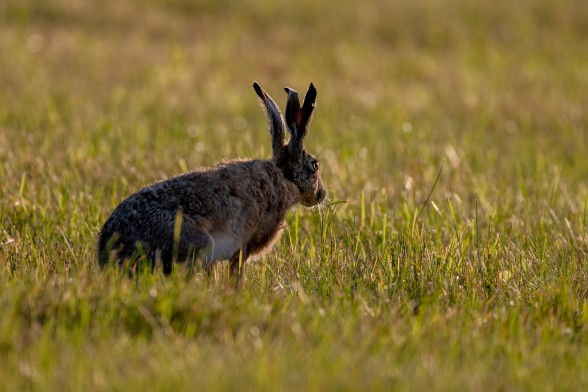
Brown hare
Diet
The brown hare (also called European hare) is a herbivore with a very wide forage spectrum. However, in all seasons, Herbaceous plants dominate, with grasses and legumes (such as beans, peanuts, lupins and clover). being the most important. In autumn, it likes to feast on legume seeds. If there are not enough leguminous plants or if they are unavailable (in winter, when there is a very thick layer of snow or frost covering meadows, pastures, winter fields), it is forced to turn to woody plants - it chews shrubs, branches and bark of larger trees felled by beavers, and small deciduous trees (young fruit trees are especially tasty). When forced by hunger, also eats dry (dead) grass.
Habitat
They live in a variety of habitats. Mainly hares are inhabitants of open landscapes (fields, meadows) and shrublands, also small woodlands and forests. They prefer areas cultivated by farmers, if given a choice. In autumn and winter, before a deep layer of snow has formed, winter crops and scrub in their vicinity are very popular. Often found in populated areas – gardens, wider greenery, woodland parks. Avoids coniferous forests and raised bogs.
Important and interesting facts
The largest member of the hare family.
The brown hare is a solitary, except during the mating season, and is active all year round. Distinct twilight and nocturnal activity rhythm. During the day it hides in a well-hidden burrow. They use their ears to communicate with each other. For example, to show interest they raise their ears, while lowering the ears warns others to keep away. It also warns other hares of danger by quickly beating its forepaws against the ground. The hare can run at 56 km/h and escapes from predators by running fast and changing direction every now and then. It is hunted by grey wolves, lynx, foxes and large birds of prey. The brown hare has good hearing, a sense of smell that works well only at short distances, and vision that is characterised by poor acuity and depth. Consequently, the hare has difficulty seeing stationary objects, but has a very wide field of vision. The position of the hare’s eyes allows it to look forwards, backwards, sideways and upwards without turning its head. It is also a good swimmer.
The European hare is very recalcitrant, so unlike the rabbit it has not been domesticated.
Information sources: latvijasdaba.lv, Wikipedia
Photos: Māris Kreicbergs
